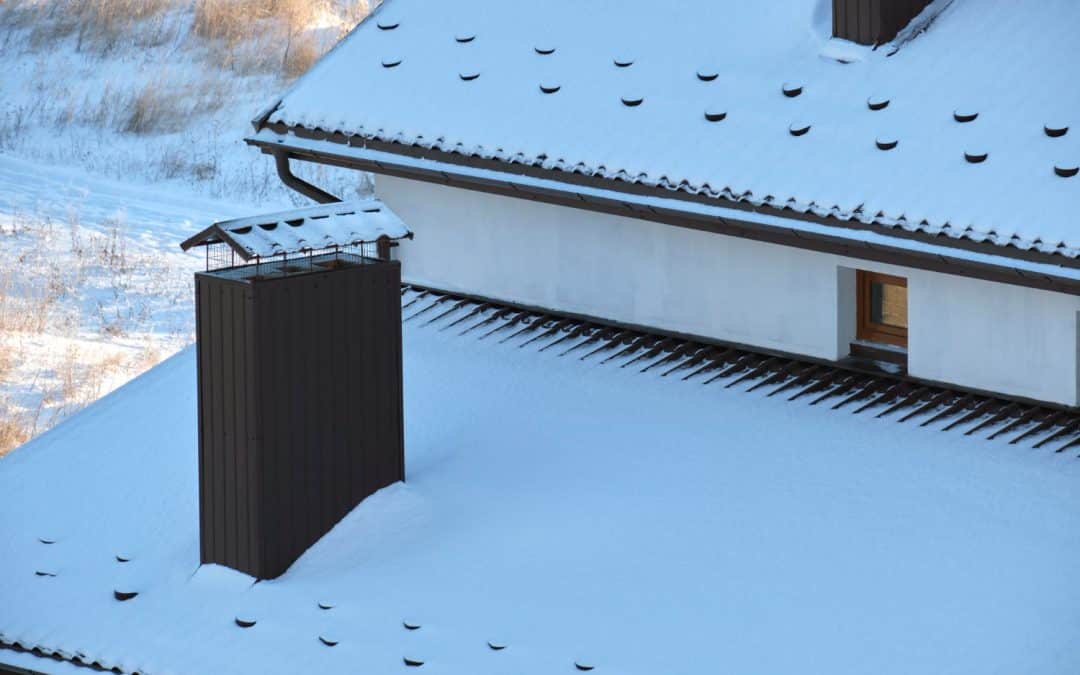Winter conditions can be harsh on your roof. Snow, ice, and freezing temperatures can cause various kinds of damage. Winter weather can significantly impact your home’s safety and comfort, from missing shingles to leaks.
Preparing a plan to address winter roof damage helps keep your home in good shape. Quick action and long-term repair strategies ensure your roof can withstand harsh winter conditions. Understanding common types of winter roof damage and knowing the immediate steps to take can make a significant difference.
Identifying Common Types of Winter Roof Damage
Winter can bring various types of roof damage. One common issue is missing or damaged shingles. Strong winds and the weight of snow can displace shingles, leading to gaps that let water in. Be sure to check for loose or broken shingles often.
Ice dams are another major problem. These occur when melting snow refreezes at the roof’s edge, blocking water from properly draining. The trapped water can seep under the shingles and into your home, causing leaks and water damage.
Snow buildup is also a concern. Too much snow on your roof can put a lot of pressure on the structure, causing it to sag or even collapse in extreme cases. Pay attention to how much snow accumulates during heavy storms.
Finally, freeze-thaw cycles can create cracks. Water can seep into tiny cracks during the day, then freeze and expand at night, causing significant damage to the roofing materials over time.
Immediate Steps to Take After Roof Damage
Acting quickly after you notice roof damage is critical. First, ensure your safety by staying off the roof, especially if it’s covered in ice or snow. Instead, inspect your roof from the ground using binoculars or call a professional for a closer look.
If you find missing shingles, you can temporarily cover the exposed areas with a tarp to prevent water from getting in. Secure the tarp well with roofing nails or bricks to hold it down until you can arrange for a proper repair.
Clear your gutters and downspouts for ice dams to help water drain away from the roof. You can also use a roof rake to remove snow buildup from the edges of your roof carefully. Avoid using sharp tools that can damage the shingles further.
If you spot leaks inside your home, place buckets or containers to catch the dripping water and protect your belongings. Dry any wet areas to prevent mold growth. Document any visible damage with photos and notes; this will be useful for insurance claims and repair assessments.
Taking immediate steps minimizes the risk of further damage and keeps your home safe until permanent repairs can be made.
Long-Term Repair Solutions and Materials
Addressing winter roof damage often requires long-term solutions. Suitable materials and methods can make your roof more resilient. Begin with high-quality shingles designed to withstand severe weather. Impact-resistant shingles are an excellent choice, as they offer more protection against hail and heavy snow.
Reinforce weak areas of your roof. If you notice sagging parts, consider adding additional supports. This extra reinforcement can prevent further sagging and help handle the extra weight from snow and ice. Consult a professional to assess where these reinforcements are needed most.
Roofing cement and sealants help fix small cracks and leaks. These materials provide a quick and effective way to prevent water from seeping through until permanent repairs can be made. Ensure your products suit winter conditions, as some may not adhere properly to cold temperatures.
It is also crucial to repair or replace flashing around chimneys, vents, and skylights. Damaged flashing can let water through, causing leaks and damage inside your home. To improve durability and weather resistance, use durable materials like aluminum or copper for replacements.
When selecting materials, prioritize those that offer increased resistance to moisture and cold weather. Long-term solutions and proper materials ensure your roof is better prepared for future winter conditions.
Preventive Measures for Future Winter Weather
Preventing roof damage begins with regular maintenance. Schedule biannual roof inspections to catch and address problems early. Inspect the roof before winter to ensure it’s in good condition and make any necessary repairs ahead of time.
Install proper attic insulation and ventilation. Good insulation keeps your home warm and reduces the risk of ice dams. Proper ventilation helps to regulate the temperature and moisture levels in your attic, preventing condensation that can lead to structural issues.
Regularly clean your gutters and downspouts. Ensure they are free from leaves and debris, allowing water to drain from your roof. Clean gutters reduce the chance of ice dams forming, which can cause significant damage.
Consider installing a snow and ice shield. This barrier can be placed under the shingles, providing additional protection against water penetration. It is particularly effective in areas prone to heavy snowfall and helps prevent ice dams.
Trim any overhanging branches near your roof. During winter storms, these branches can break and cause damage. Keeping them trimmed back reduces the risk and keeps your roof clear of additional debris.
Conclusion
Taking care of your roof is essential for surviving harsh winter conditions. You can protect your home effectively by identifying common types of damage, taking immediate steps when issues arise, and implementing long-term repair solutions. Regular maintenance and preventive measures ensure your roof remains robust and reliable.
A well-maintained roof safeguards your family and home, providing peace of mind throughout winter. Stay proactive and address issues promptly, ensuring minor problems don’t become significant expenses.
For expert advice and residential roofing repair services, contact Mike Huddleston Roofing Systems. Our team is ready to help you keep your roof in top shape. Schedule a consultation today, and let us help you prepare for the next winter season.

